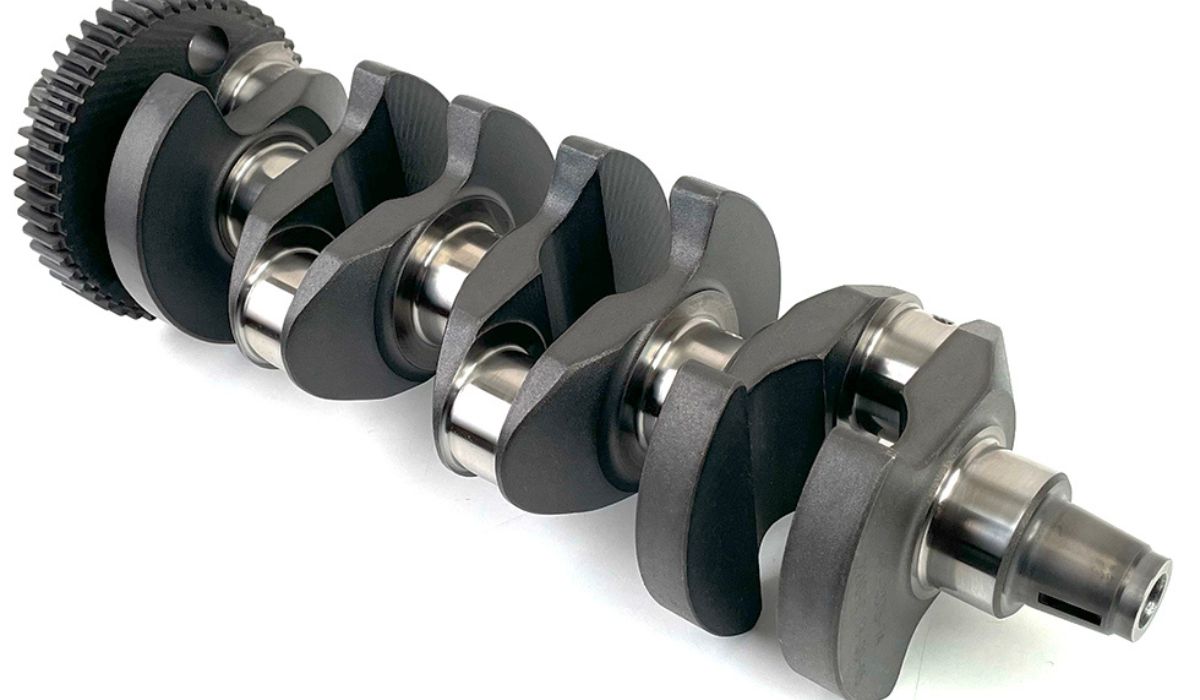The crankshaft is the central moving part in today’s internal combustion engines and is responsible for producing the vast majority of the engine’s power. It is essential because it changes the linear action of the pistons into the rotating motion of the wheels, which is what actually moves the car ahead. In this piece, I’ll explain how a crankshaft works, how it’s built, and why it’s so important in the auto industry.
Understanding the Crankshaft’s Function
Reciprocating Motion to Rotational Motion
The crankshaft’s fundamental function is to transform the pistons’ reciprocating motion into useful rotating motion. This transformation allows the engine to produce torque, which is essential for the vehicle’s propulsion.
Connecting Rods and Journal Bearings
Pistons are attached to the crankshaft through connecting rods. These rods connect the pistons to the crankshaft so that the latter can move up and down. Journal bearings additionally minimize friction and permit smooth rotation of the crankshaft.
The Anatomy of a Crankshaft
Main Bearings and Crankpins
Main bearings and crankpins are the standard components of a crankshaft. The crankshaft is supported by the main bearings, which run the length of the shaft inside the engine block. But the crankpins are the asymmetrical parts of the shaft that link to the rods.
Construction Materials
To ensure its durability and reliability under harsh conditions, crankshafts are typically forged from high-strength steel. Forged or billet crankshafts are used in some high-performance engines to increase durability and decrease weight.
Balancing and Vibration Control
Engine Balancing
The crankshaft must be balanced properly to reduce vibrations. Vibrations that aren’t dampened might be bad for the car’s engine and the passengers’ comfort. To prevent jerky rotation and vibrations, engineers utilize counterweights and careful design.
Harmonic Dampers
Harmonic dampers are installed on many crankshafts to reduce vibrations and torsional forces. The engine will run more smoothly and reliably thanks to the dampers’ ability to absorb and disperse vibrations generated by the combustion process.
Crankshaft Design Variations
Inline Crankshaft
The cylinders in an inline engine are arranged in a straight line, and there is just one crankshaft. Many automobiles use this layout because it is easy to understand, operates smoothly, and gets great gas mileage.
V-Shaped Crankshaft
Two parallel banks of cylinders in a V-shaped engine, as a V6 or V8, rotate around a single crankshaft. Because of the layout, the engine’s displacement can be raised to produce greater force.
Flat Crankshaft
Flat, or boxer, engines have cylinders that are horizontally opposed with a crankshafts that runs in a horizontal plane. This layout decreases vibration, improves vehicle stability by lowering the center of gravity, and produces a distinctive engine sound.
Maintenance and Common Issues
Crankshaft Wear and Alignment
The crankshaft can eventually wear out because of all the stress and pressures acting on it. Lubricating and servicing it on a regular basis is crucial to its longevity and efficiency.
Crankshaft Position Sensor
A crankshaft position sensor is used in modern engines to track the crankshaft’s location and rotational speed. The ignition timing and engine performance can be negatively impacted if this sensor fails.
Conclusion
The crankshaft’s continued importance in modern internal combustion engines is underscored by its role in transforming linear motion into rotational energy. Crankshafts continue to play an important part in moving cars ahead, and with proper planning, material choice, and upkeep, they can continue to do so for years to come.
FAQs
What is a crankshafts, and what does it do in an engine?
In internal combustion engines, the crankshafts plays a key role. Its principal purpose is to transform the pistons’ reciprocating action into rotary motion. Torque is produced by the rotation, which is then used to power the vehicle’s wheels for forward movement.
How does the crankshafts work with the pistons?
Pistons are attached to the crankshafts through connecting rods. Pistons’ up-and-down motion in their cylinders is transmitted to the crankshaft via connecting rods. The offset crankpins in the crankshaft take this linear motion and transform it into a circular one, causing the crankshaft to rotate.
What materials are crankshafts made from?
High-strength steel is commonly used to make crankshafts because it has the durability and strength to handle the strains and forces present in an engine. Forged or billet crankshafts are sometimes utilized in high-performance engines because of their light weight and excellent strength.
What is the significance of engine balancing and harmonic dampers in a crankshafts?
Vibrations induced by the engine’s spinning and reciprocating masses can be mitigated through proper balancing. Engine damage and passenger discomfort are two potential outcomes of vibrations that are not managed properly. Harmonic dampers, often called vibration dampers or balancers, reduce engine noise and wear by soaking up and dispersing vibrations generated by the combustion process.
What are the different types of crankshafts configurations in engines?
Crankshafts can be set up in a number of ways.
Many cars use an inline crankshaft, which has cylinders aligned in a straight line and a single crankshafts.
For example, a V6 or V8 engine will have two angled banks of cylinders that share a single crankshafts.
Boxer engines, which feature horizontally opposed cylinders, are characterized by their flat-plane crankshaft.











